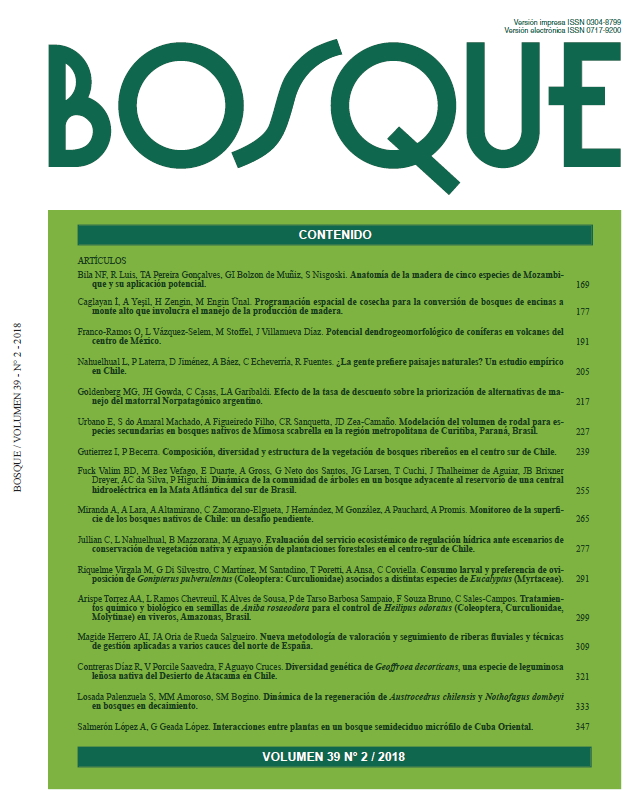Regeneration dynamics of Austrocedrus chilensis and Nothofagus dombeyi in declining forests
Main Article Content
Abstract
The Austrocedrus chilensis forests in Argentina experience a process of decline and mortality with important impacts on the structure and population dynamics. Although its study has received significant attention over time, knowledge related to the growth of the regeneration and its response to the gradual changes in the canopy over time driven by mortality is incipient. The objective of this study was to investigate, through dendrochronological methods, the population dynamics and the radial growth of the regeneration of individuals of Nothofagus dombeyi and A. chilensis in declining forests in the northwest of Río Negro Province, Argentina. Overstory mortality and canopy changes significantly impacted the understory structure through the establishment and growth patterns of regeneration. The average radial growth, the average age and the average diameter of the individuals of A. chilensis and N. dombeyi differed significantly. There is a positive response in the average growth of both species when the basal area loss by mortality exceeds 20 %, probably due to the higher number of changes in the instantaneous rates of growth of individuals. Based on our results, we can predict a transition from the current pure and single-cohort forests of A. chilensis towards irregular forests of mixed composition.

